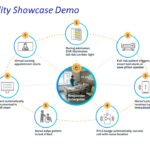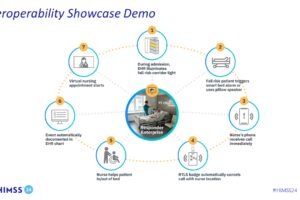 The following is a guest article by Vivian Liu, COO at Braid Health
The following is a guest article by Vivian Liu, COO at Braid Health
One thing in healthcare remains constant: the need for answers. This is why radiology is a pillar of our healthcare system because, without a diagnosis, there is no treatment.
In today’s digital age, people want things to be fast, convenient, and reliable. The same is true in healthcare. Patients seek fast, crystal-clear answers to their issues.
In the last 5–10 years, substantial innovations in imaging, particularly through deep learning methods of image classification, have emerged. A noteworthy development is the augmentation of radiology with Artificial Intelligence (AI). Machine learning technologies will soon likely automate areas such as image segmentation, lesion detection, measurement, labeling, and comparison with historical images.
Although AI has provided an extra perspective, the future of radiology relies on improved collaboration among radiologists, technicians, and healthcare providers. When these healthcare professionals can work closely in the diagnostic process, they can share more expertise, and minimize confusion, errors, and delays.
This collaborative effort creates a feedback loop that values every member of the care team, even if they are not physically in the same place but connected through the same communication channel. The result? Better patient experiences and clinical outcomes.
Radiology’s Existing Challenges in Diagnostic Delivery
Radiology often becomes a frustrating bottleneck, and any delay in the process can heighten a patient’s anxiety and prolong a prognosis.
Several factors contribute to these bottlenecks. Understanding complex imaging studies such as MRI or CT scans can be subjective and prone to misinterpretation. Technical issues with imaging equipment or X-ray image quality may lead to inaccuracies in diagnosis, requiring repeat imaging with unnecessary radiation exposure and increased operational costs.
Radiology is particularly at risk for communication problems due to the immense number of reports being generated every day. The growing workload can lead to overlooking crucial findings, resulting in misdiagnoses and other medical mistakes that can easily lead to avoidable health complications down the line.
To address this trend, tighter communication is needed between referring physicians, radiologists, and technologists. Faster turnaround time (TAT) is the focus. TAT refers to the time it takes to perform an imaging study, interpret the results, and deliver a report to the patient or their referring physician. When patients receive their imaging results faster, it means they can get the care they need more quickly. This speedy turnaround not only helps them follow their treatment plans but also boosts their confidence in managing their health.
Teleradiology’s New Partner: Real-Time Radiology
While teleradiology has revolutionized remote diagnostics by allowing medical images to be interpreted at different locations, the process still encounters communication delays with disjointed technology systems between clinical practices and acute care settings.
Real-time radiology bridges this gap by harnessing modern technology to offer patients immediate answers and diagnostic imaging results before they walk out of the examination room.
Beyond faster TAT, real-time radiology ensures quality by involving all involved in the diagnostic process to validate information collectively. It’s a commitment that upholds a high standard of healthcare, ensuring patients receive not just timely but trustworthy answers.
Real-time radiology also distinguishes itself by minimizing wait times, which is especially beneficial for patients in high-stress settings like the ER or urgent care. Having a real-time diagnostic solution that integrates with Electronic Health Records (EHR) allows for a more complete understanding of a patient’s health history, helping providers improve the quality of interpretation by providing a better context.
The Impact of Real-Time Radiology on Patient Experience
At the heart of healthcare, positive patient outcomes are the ultimate goal. The well-being and recovery of individuals under medical care rely on a diagnostic process that hinges on three key players – the provider, the radiologist technician, and the radiologist.
The provider acts as the linchpin, responsible for the overall patient experience and relying on insights from both the radiologist and the tech. The tech uses their accuracy and precision in capturing images, laying the groundwork for the radiologist’s interpretation. The remote radiologist’s expertise relies heavily on the quality of the images provided.
Real-time radiology creates a communication bridge between these three medical professionals. It allows them to exchange insights, ask questions, refine diagnoses, and instantly recapture images if more clarity is needed.
This powerful intersection of healthcare and technology is playing out in real life and real-time radiology is proof of how getting the right care in time-sensitive situations can be a matter of life or death.
At a Walmart Health Center, a dedicated physician recently demonstrated the transformative power of real-time radiology in a life-saving situation.
A woman arrived at the clinic with apparent symptoms of a heart attack, and the physician wasted no time in utilizing advanced diagnostic tools and seamless communication with a remote radiologist to swiftly identify a critical issue – a 99% blockage in her artery. The physician promptly made the call to transfer the patient to the emergency room for immediate care. This collaborative approach, leveraging technology and expertise at every step, ensured a rapid response and ultimately saved the woman’s life.
Harmonizing Healthcare Teams for Diagnostic Excellence
As medical imaging technology continues to advance, the demand for closer collaboration in siloed systems becomes more apparent. To break free from the inertia cycle in healthcare, real-time communication among all stakeholders in the diagnostic process is the next step. Creating a strong alliance between radiology and medical teams will be the new standard for providing top-tier patient care.
Successful patient outcomes hinge on seamlessly integrating innovative communication technology into the radiology workflow. Leveraging real-time radiology is paramount in this shift to modernize the field. The immediate and collaborative information exchange will revolutionize how healthcare professionals deliver diagnostic accuracy and contribute to a more positive and patient-centric healthcare experience.













